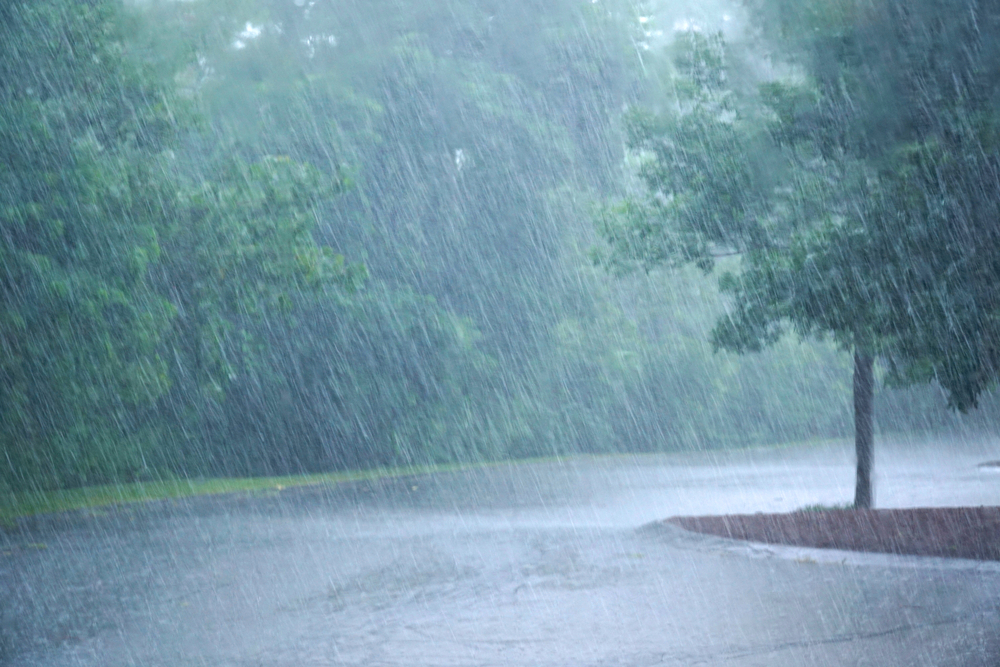
by siteadmin | Aug 30, 2019 | Emergency Preparations, Severe Weather
As summer draws to a close, plenty of homeowners are looking forward to not dealing with severe summer thunderstorms as frequently. However, Houston isn’t completely out of the woods yet. Even if heavy rains later in the year don’t quite measure up to a summer downpour, you may still find yourself dealing with severe weather a little longer.
Preparing Your Home
Aside from the basics of gathering emergency supplies for yourself and your family, make sure to get your home ready for the abuse a severe thunderstorm is sure to dish out. Even if you’re confident your home can take it, it never hurts to be prepared. Use this checklist to inspect your house and protect vulnerable spots:
- Check your roof, outside and inside
- Clear your gutters
- Protect valuable outdoor items
- Check your windows and doors
1) Check Your Roof, Outside and Inside
If you don’t have time to get a free expert inspection, take a few minutes to examine your roof yourself. Any signs of a leak on the inside or outside of your roof should be covered immediately with a tarp and repaired as soon as the rain stops. Don’t let your home or belongings be damaged even by the possibility of a leak.
2) Clear Your Gutters
Gutters notoriously fill with leaves, twigs, and other debris over time, making it difficult for them to effectively drain your roof. For a long-term solution, considering installing gutter guards to prevent clogging. If you don’t have gutter guards yet, quickly check to ensure the gutters are clear and clean them out before the storm hits.
Pro Tip: If rainwater can’t drain properly off your roof, it weighs down in puddles and can cause leaks or collapsing. That’s why it’s so important to keep your gutters clean.
3) Protect Valuable Outdoor Items
Most homeowners have a few belongings they keep outside, such as grills, bicycles, or outdoor furniture. However, even water-resistant items will sustain some damage in a severe downpour. Bring everything inside before the storm hits to keep your outdoor valuables safe.
4) Check Your Windows and Doors
Finally, remember that your roof isn’t the only part of your house that can leak. Make sure the seals around your windows and doors are still secure and doing their job. If you find a leak, cover it temporarily with a waterproof protector until you can repair it later.
Protecting Your Conroe Home
In areas prone to severe weather and heavy rain, houses are built to endure the storms. However, every house has its flaws, especially as time passes and the original construction loses some of its strength. The best thing you can do as you prepare for heavy rain is to take a few extra steps to protect your home from severe damage through periodic inspections and maintenance.
Connect with us to learn more about preparing your home for the last bit of severe summer weather.
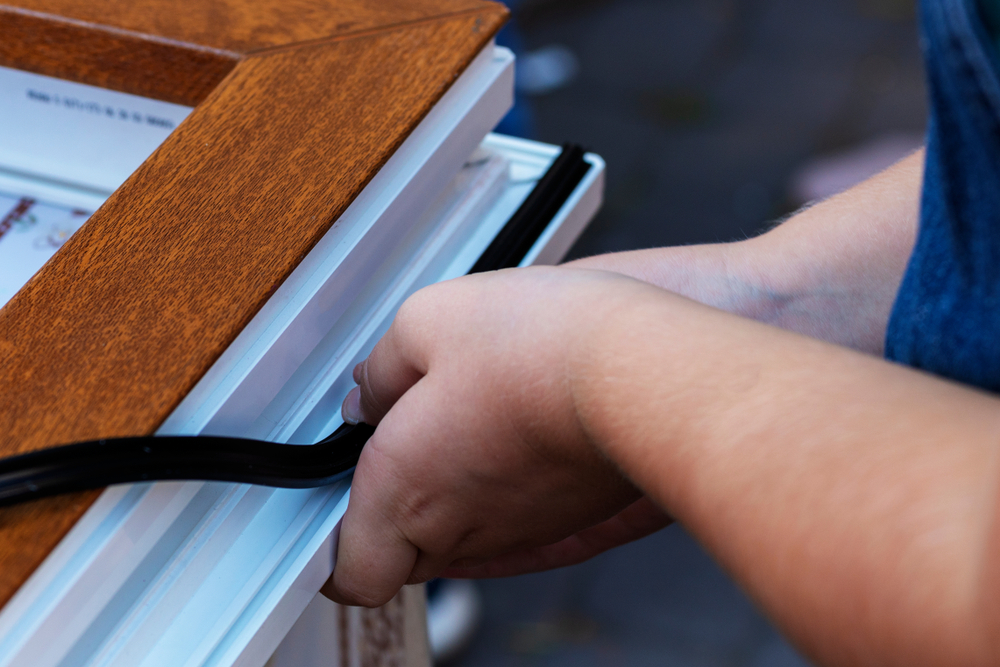
by siteadmin | Aug 23, 2019 | Home Renovation, Roofing Insulation, Roofing Materials
When you think about insulation for your home, you probably think of keeping the heat inside during cold weather. While this is certainly one application of insulation, a different type of material can actually help keep heat out. Believe it or not, using the right kind of insulation in the right places can actually repel heat and keep your home cool in the summer.
If you’re looking for the best insulation to keep heat out, you can’t go wrong with the two most popular and effective choices: weather stripping and radiant barrier insulation. Properly used, both will seal your air conditioning inside and repel the heat outside. How can these help your house as the weather stays warm?
Weather Stripping
Some of the most common places for climate-controlled air to escape is around your windows and doors. A crooked window or door could be raising your energy bills significantly by providing a constant slow leak. Fortunately, this is an easy fix. Strategically placing weather stripping around the edges will block most leaks and allow your home’s climate to balance itself out again.
Pro Tip: Be skeptical of any window company that claims to be able to reduce your energy bills with replacement windows. These claims are borderline illegal, often incorrect, and have gotten several companies sued. Save your money and install weather stripping instead.
Radiant Barrier
Radiant barrier insulation does more than just keep cool air inside. This reinforced layer of aluminum lines the inside of your attic roof and reflects heat back outside. Even this thin layer of insulation is surprisingly effective–a study shows that proper installation of a radiant barrier could save between 10-15% on energy costs. Just make sure your roof builder knows how to properly install insulation!
A Few Mistakes to Avoid
Of course, insulation material should be handled with care and isn’t effective in every place in the house. Keep these common errors in mind as you plan your insulation project:
- NEVER put insulation on or near active knob and tube wiring–that’s a great way to start a fire. Have the hazardous equipment professionally removed first.
- Avoid insulating spaces that won’t affect the transfer of heat much, such as exterior walls. You’ll just end up spending a lot of money for very little change.
- Don’t block any ventilation or HVAC ductwork with insulation–this will only make the problem worse.
Stay Cool!
Your air-conditioned home is your refuge against the high temperatures of any Houston day. By researching and installing the best insulation to keep heat out of your house, you’re sure to continue enjoying the comfort of a climate-controlled house for years to come.
Connect with us to learn more about preparing your roof and house for hot weather.
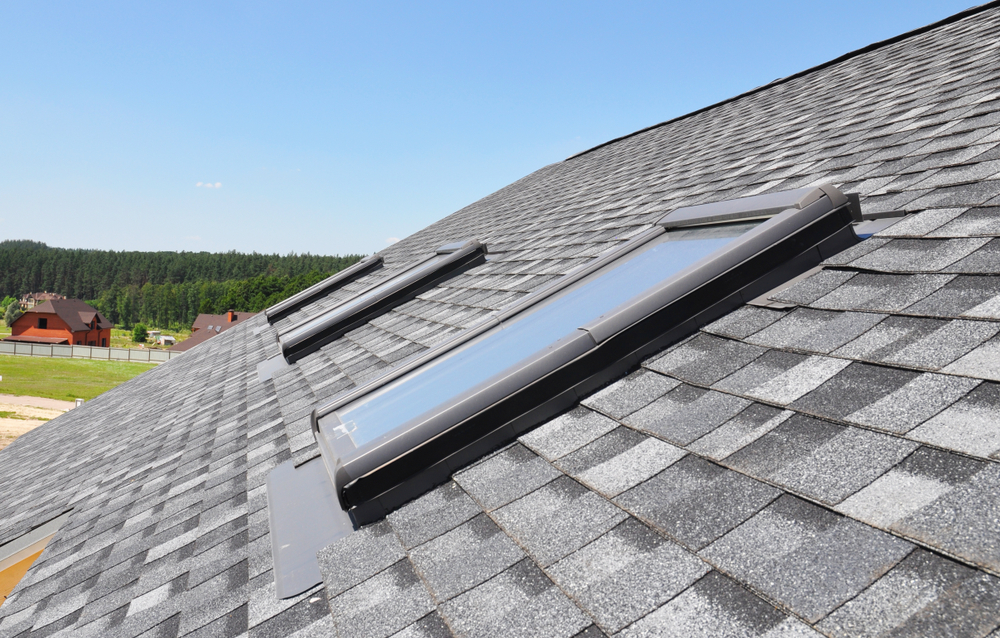
by siteadmin | Aug 16, 2019 | Home Renovation, Roofing Materials, Severe Weather
Are you thinking of upgrading or replacing your roof? What materials are you planning to use? Not all roofing materials are created equal, after all. Most homeowners generally try to find the most cost-effective, longest-lasting roof material they can.
Different types of roofing material are appropriate for different home locations, as well as previous damages done to the roof. While certain types of roofing materials last longer than others, it’s also important to remember that some types may not be appropriate for a particular setting. The best thing to do is to look at the different types of available materials and see which is the best fit for your home.
Shingles
High-quality asphalt shingles are still the most popular choice for the majority of homeowners. The slightly higher cost of these roofing materials are more than worth it–well-made shingles will last 20 years or more. Roofing shingles are also among the easiest roof materials to replace or patch following roof damages. These popular materials stand the test of time!
Pro Tip: Some homeowners opt for wood shingles and shakes. Similar to asphalt shingles, wood shingles have an expected lifespan of about 20 years but can last much longer in mild weather.
Tiles
Roofing tiles made of concrete, clay, or slate have a staggering life expectancy of 100 years! Even so, tiles are more of a challenge to install or maintain than shingles. For instance, the building materials are significantly heavier and more expensive, making a project with them more difficult. Additionally, poorly made shingles can crack or split during severe weather such as a hailstorm. While tiles are certainly an elegant and durable choice, it pays to double-check their quality and make sure your local weather won’t cause you problems later on.
Metal
Metal roofing generally lasts 40-60 years and is arguably the strongest of any conventional building material. However, certain types of damage (like a dent or rusty spot) require most of the roof to be replaced since the metal is likely all a solid piece. Additionally, between materials and installation costs, you’ll end up paying more overall for a metal roof. Talk to your roofing contractor to see if it’s in your best interest to opt for metal.
A Houston Roof that Will Last for Decades
A well-constructed roof of long-lasting roofing material will survive for decades in most cases. Depending on your home’s location, your current roof’s condition, and your own preferences, you can easily opt for an excellent roof to protect your home for years to come.
Connect with us to learn more about the best roofing material for your home.
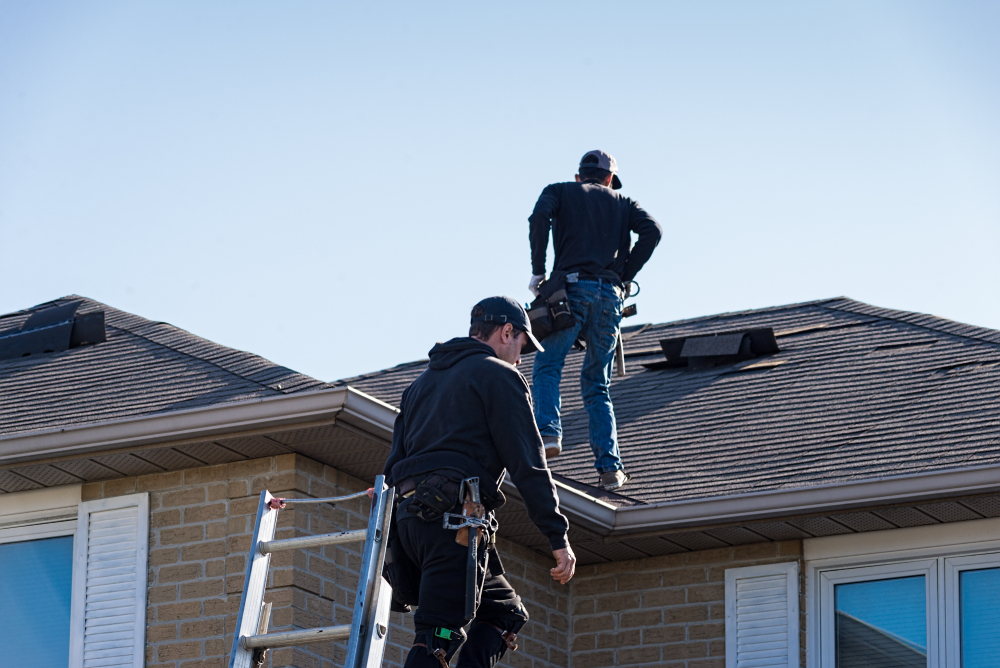
by siteadmin | Aug 9, 2019 | Roof Damage, Temporary Roof Repair
For many homeowners, DIY repairs offer a quick, inexpensive way to improve your house. There’s certainly plenty of housework that DIY can easily handle. However, for more important home repairs or maintenance, you may not be able to fix the problem yourself. Roof repairs fall into this category.
The safety and efficiency of DIY roof care depend on a number of factors, but fixing the roof yourself is generally not advised. Aside from immediate safety concerns, there is also the possibility that you might only worsen the problem. Consider a few key components before you start your DIY roof project.
Safety Concerns
Roof maintenance does require you to spend a fair amount of time on top of your house. Aside from the possibility of falling over the edge, the damage to your roof could be severe enough that putting additional weight on the roof is not safe. The roof itself could break. Not only does this add more costly repairs to your project, but you could also find yourself falling through a hole in your own roof. You open yourself up to potential risks with DIY roof maintenance.
Thorough Repair Work
Unfortunately, the average homeowner doesn’t always recognize the signs of subtle roof damage. Whether it’s from wear and tear or a particular weather disaster, your roof takes quite a beating with time. Not knowing what roof damage looks like means that you can easily overlook necessary repairs in your DIY project. Hire a professional to perform a thorough roof inspection to make sure you get the best repair possible.
Pro Tip: While it’s best to leave a thorough inspection to the experts, keep an eye on your roof. Check for water damage after heavy storms and call a repair service if anything seems wrong.
When is DIY Appropriate?
For a simple repair, taking care of the problem yourself will cost you less time and money. A few cases where DIY is appropriate include:
- Caulking leaks
- Replacing a couple of shingles
- Cleaning the gutters
- Removing leaves and other small debris
These small projects require little effort or precision to get exactly right, so the risks involved in performing these repairs yourself is minimal. However, don’t overestimate your abilities. If your roof is badly damaged or needs more extensive repairs, save yourself a headache and call a professional.
Extend the Life of Your Woodlands Roof with Professional Maintenance
Roof care may not be a major concern for you unless you’re dealing with severe leaks or damage. But if you regularly have your roof inspected by a professional and perform small DIY maintenance yourself, you can extend the life of your roof and by extension, the rest of your house. Keep your home in good shape with periodic inspections and repairs.
Ready to schedule your free roof inspection? Connect with us and start talking with our roofing experts!
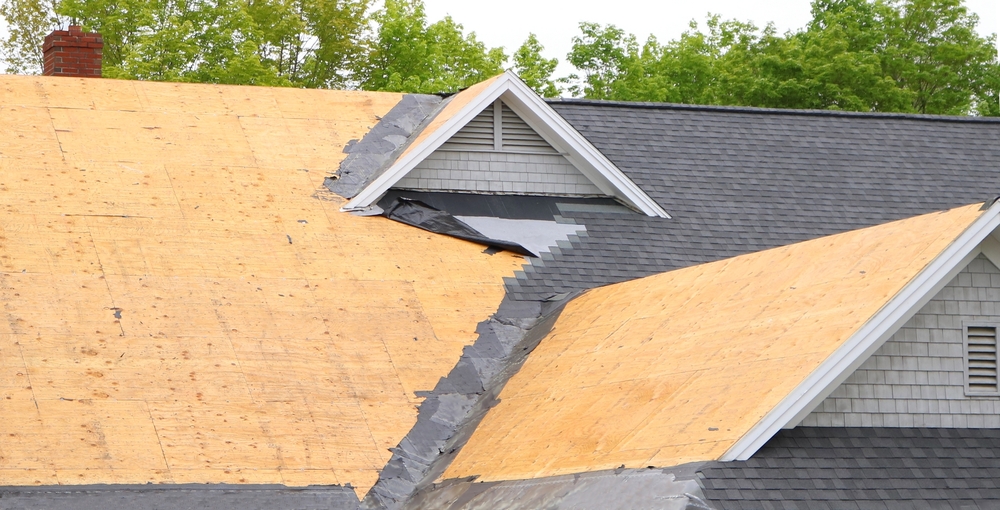
by siteadmin | Aug 2, 2019 | Roof Inspection, Roof Repair, Roof Replacement
There’s no question that preventive maintenance work on your home can save you an immense amount of effort and money later on. It’s better to catch a problem when it can be easily handled than to let it worsen with time. However, your roof may be a different story. When is it appropriate to replace the entire thing, and when can you get by with just a few repairs?
Depending on the extent of damages, you may only need a cosmetic touch up or minor repair instead of a full roof replacement. However, choosing one solution too quickly does you no favors. Before you decide on the type of work your roof needs, it’s important to assess the damage and consult an expert.
Patching Over Minor Damage
Missing shingles can result in damage to the roof itself. Fortunately, homeowners may get lucky and only end up with a minor hole or weak spot in the roof. In this case, you may be tempted to think a quick patch will take care of the problem. This may seem like an easy fix, but you should always let an expert inspect the roof first. The damage may have spread further than it first appears. Additionally, adding patching an old roof in need of repairs with brand new roofing materials may just make the whole situation worse. Never assume a patch will fix the deeper issue.
Replacing Shingles or Tiles
If only a few shingles or tiles are missing, a quick replacement is probably all you need. Once again, however, the true answer depends on the rest of your roof. Does the damage extend into the structure itself? Are the other shingles on the roof buckled or peeling? Shingles are designed to last for decades, so if you notice the other shingles starting to fall apart, that’s a sign of serious damage below the surface.
Additionally, if you see granules from your asphalt shingles showing up on the ground or in your roof’s gutters, that indicates moderate to severe roof damage. Call a roof repair service immediately.
Pro Tip: Replacing only damaged shingles or tiles while ignoring the roof structure itself runs the risk of ignoring subtler problems. Always have the roof inspected too.
A Whole New Roof
Finally, there will be times when you can’t get away with mere repairs and have to settle for an entirely new roof. If your roof has recently suffered severe storm or water damage, the materials are deteriorating, or your home is simply old and in need of renovations, you’ll find yourself having a new roof installed. Your roofing contractor will help you determine the exact extent of necessary work.
Determining the Best Course of Action
Your roof is your home’s first line of defense against wind, rain, hail, and more. Even minor damages can be catastrophic if left untreated. Before you decide on whether to replace or repair your roof, make sure to consult with an expert on the best decision to prevent your house from sustaining further damage.
Connect with us to schedule your free roof inspection today!








